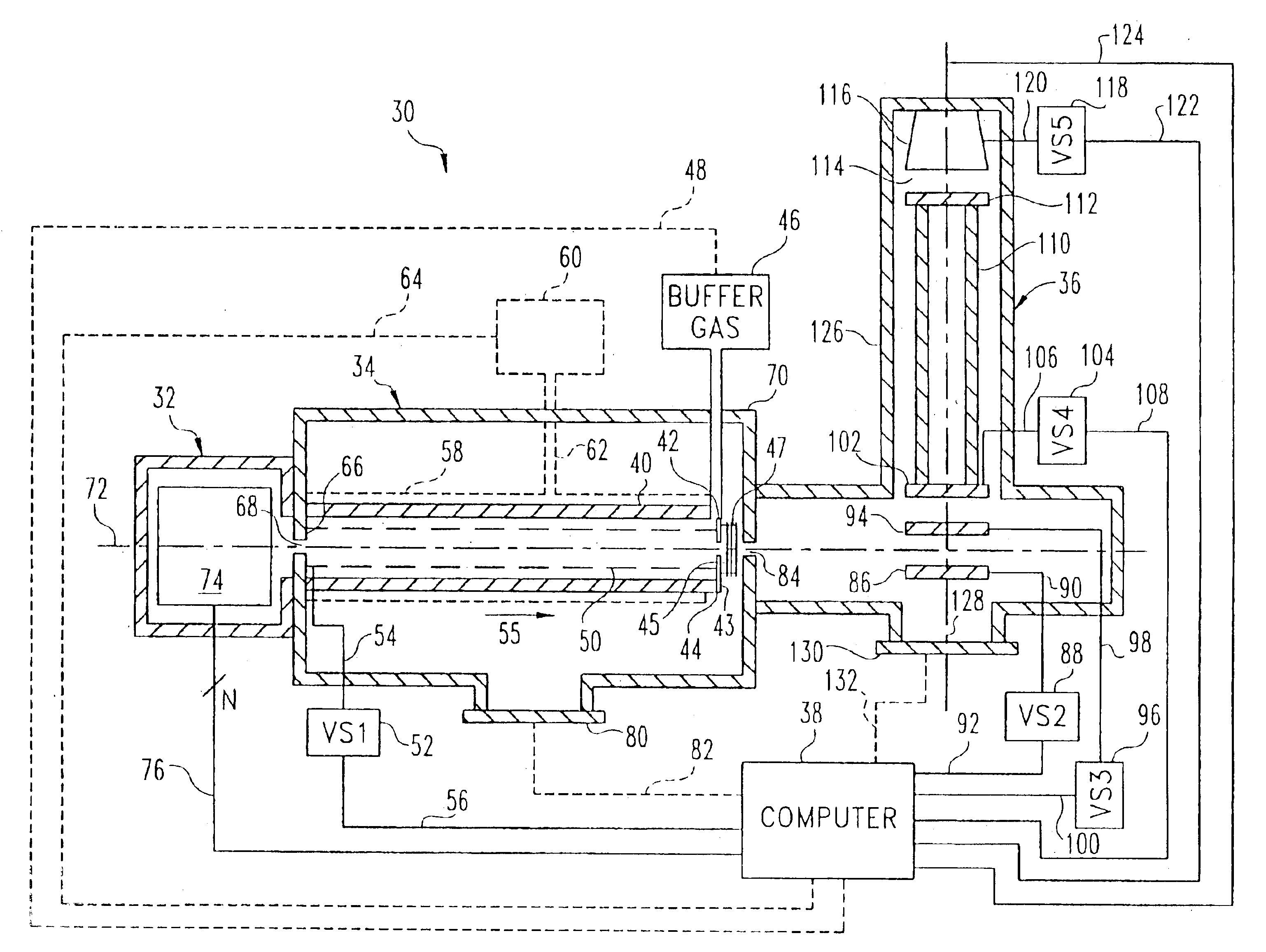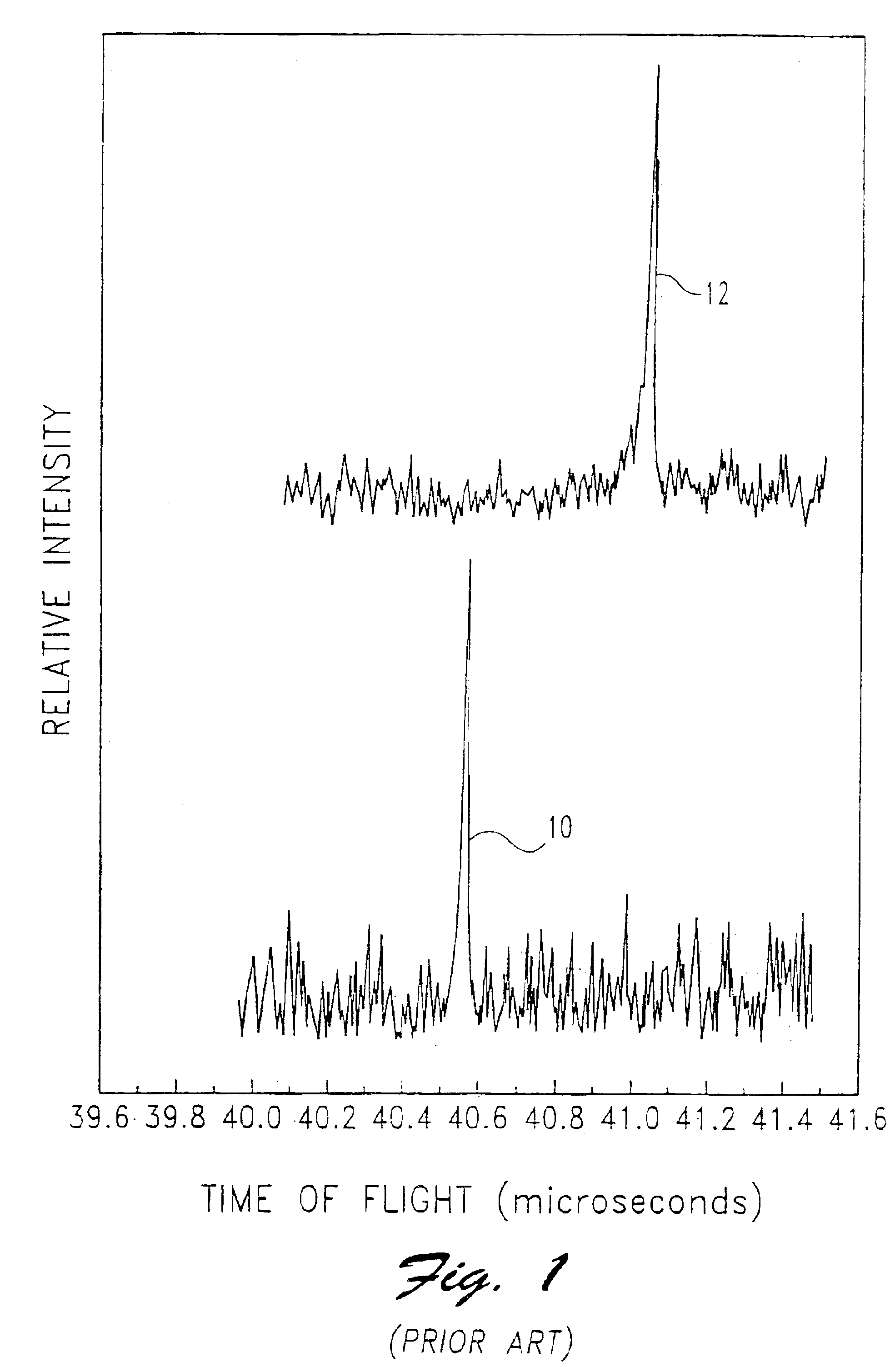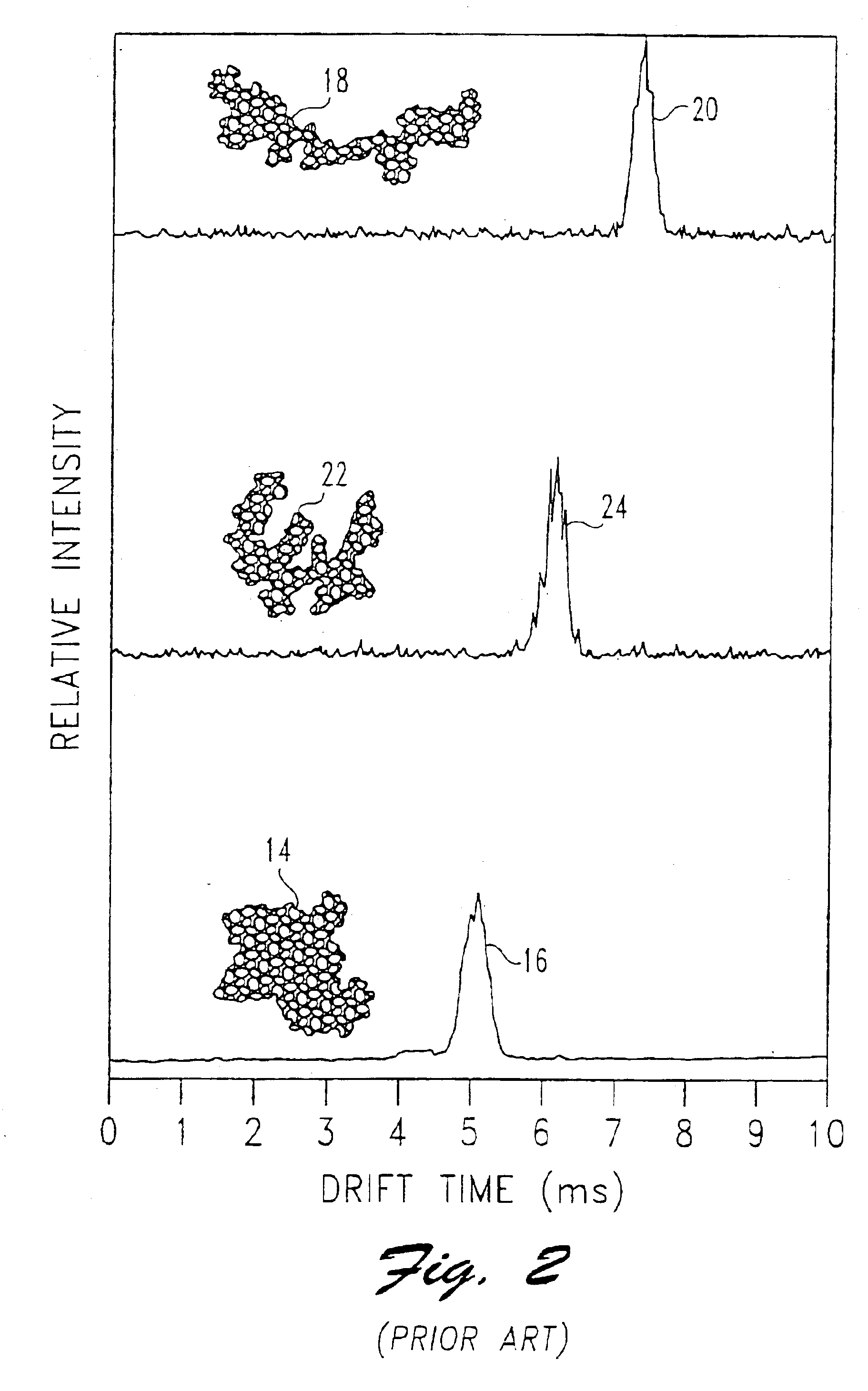Instrument for separating ions in time as functions of preselected ion mobility and ion mass
a technology of ion mobility and ion mass, applied in the field of molecules characterization instruments, can solve the problems of labor-intensive manual and automated page techniques, limited accuracy of such systems, and inability to accurately detect the ion mass, etc., and achieve the effect of rapid analysis and sequencing
- Summary
- Abstract
- Description
- Claims
- Application Information
AI Technical Summary
Benefits of technology
Problems solved by technology
Method used
Image
Examples
embodiment 30
[0077]In order to address the foregoing problems associated with non-perpendicular positioning of the TOFMS 36′ relative to the IMS 34, which are the same problems associated with the Guevremont et al. system discussed hereinabove in the BACKGROUND section, instrument 150 is provided with an ion trap 152 operatively positioned between the ion outlet opening 84 of IMS 34 and the space defined between grids or plates 86′ and 94. In the embodiment illustrated in FIG. 5, grid or plate 86′ defines an ion inlet opening 178 therethrough which is aligned along axis 72 with ion outlet opening 84 of IMS 34. In other non-perpendicular arrangements of TOFMS 36′ relative to IMS 34, ion inlet opening 178 may not be required since ions may enter the space between grids or plates j86′ and 94 in the same manner as discussed with respect to the embodiment 30 illustrated in FIG. 4.
[0078]In any event, ion trap 152 is preferably a known quadrupole ion trap having a first endcap 154, a center ring 162 an...
embodiment 74
[0083]Referring now to FIG. 7A, one preferred embodiment 74′ of an ion source 74 for either of the instrument embodiments of FIGS. 4 and 5, is shown. Embodiment 74′ includes a chamber 200 having a sample 202 mounted therein and an optical window 206 extending therefrom. A radiation source 204 is electrically connected to computer 38 via signal path 76A, and is configured to direct radiation through optical window 206 to thereby irradiate sample 202. Chamber 200 may include a conduit extending therefrom to a pump 208 which may be controlled by computer 38 via signal path 76B.
[0084]Ion source 74′ is a known MALDI arrangement wherein radiation source 204, preferably a laser, is operable to desorb gaseous ions from a surface of the sample 202. Computer 38 is operable to control activation times of laser 204 to thereby control sample ionization events. The desorbed ions are directed by the internal structure of chamber 202 to ion inlet opening 68 of IMS 34. The sample 202 may, in accorda...
PUM
| Property | Measurement | Unit |
|---|---|---|
| flight time | aaaaa | aaaaa |
| flight time | aaaaa | aaaaa |
| drift time | aaaaa | aaaaa |
Abstract
Description
Claims
Application Information
 Login to View More
Login to View More - R&D
- Intellectual Property
- Life Sciences
- Materials
- Tech Scout
- Unparalleled Data Quality
- Higher Quality Content
- 60% Fewer Hallucinations
Browse by: Latest US Patents, China's latest patents, Technical Efficacy Thesaurus, Application Domain, Technology Topic, Popular Technical Reports.
© 2025 PatSnap. All rights reserved.Legal|Privacy policy|Modern Slavery Act Transparency Statement|Sitemap|About US| Contact US: help@patsnap.com



